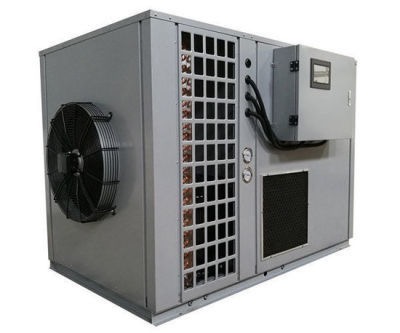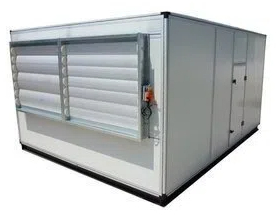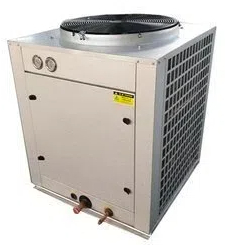
Content Menu
● Introduction
● Understanding The Technologies
>> Condenser Dryer Technology
>> Heat Pump Dryer Technology
● Key Comparison Factors
>> Energy Efficiency
>> Drying Performance
● Cost Considerations
>> Initial Purchase Price
>> Operating Costs
● Environmental Impact
>> Energy Consumption
>> Longevity and Sustainability
● Installation and Space Requirements
>> Location Flexibility
>> Size and Dimensions
● Maintenance Requirements
>> Regular Care
>> Long-term Maintenance
● Practical Considerations
>> Drying Time
>> Fabric Care
● Making The Right Choice
>> Household Needs Assessment
>> Long-term Value
Frequently Asked Questions
>> Q1: How much more expensive are heat pump dryers compared to condenser dryers?
>> Q2: Do heat pump dryers really save enough energy to justify their higher cost?
>> Q3: Which type is better for people in apartments or small spaces?
>> Q4: How much longer do heat pump dryer cycles take compared to condenser dryers?
>> Q5: Which type requires more maintenance?
Introduction
When it comes to choosing a new clothes dryer, many consumers find themselves deciding between condenser and heat pump models. Both technologies offer distinct advantages and considerations, making the choice dependent on various factors including energy efficiency, performance, cost, and individual needs.
Understanding The Technologies
Condenser Dryer Technology
Condenser dryers work by heating air and passing it through tumbling clothes. The warm, moist air then passes through a heat exchanger where it's cooled, causing water vapor to condense. This water is collected in a container or drained away, while the air is reheated and recirculated.
Heat Pump Dryer Technology
Heat pump dryers use a more sophisticated system that operates like a reverse air conditioner. They extract heat from the air, reuse it efficiently, and operate at lower temperatures. This technology offers superior energy efficiency but typically comes with a higher initial cost.

Key Comparison Factors
Energy Efficiency
Heat pump dryers are significantly more energy-efficient than condenser dryers. They typically use about half the energy of conventional condenser models, leading to lower running costs and reduced environmental impact. This efficiency comes from their ability to reuse heat effectively throughout the drying cycle.
Drying Performance
Both types can effectively dry clothes, but there are differences in their operation. Condenser dryers typically dry clothes faster but use more energy. Heat pump dryers take longer but are gentler on clothes and more energy-efficient.
Cost Considerations
Initial Purchase Price
Condenser dryers generally have a lower purchase price, making them more accessible to budget-conscious consumers. Heat pump dryers require a higher initial investment, though this can be offset by long-term energy savings.
Operating Costs
Heat pump dryers excel in operating cost efficiency. Their reduced energy consumption leads to significantly lower running costs over time. Condenser dryers, while cheaper to purchase, typically have higher operating costs due to greater energy usage.

Environmental Impact
Energy Consumption
The environmental impact of these appliances primarily relates to their energy consumption. Heat pump dryers have a smaller carbon footprint due to their superior energy efficiency, making them the more environmentally conscious choice.
Longevity and Sustainability
Both types can last many years with proper maintenance, but heat pump dryers often have longer lifespans due to their gentler operation. This durability factor contributes to their overall environmental impact assessment.
Installation and Space Requirements
Location Flexibility
Both types offer flexibility in installation as neither requires external venting. However, they do need adequate ventilation space and consideration for their condensation collection systems.
Size and Dimensions
Heat pump dryers may be slightly larger due to their more complex technology. This size difference should be considered when planning installation in limited spaces.
Maintenance Requirements
Regular Care
Both types require regular maintenance, including filter cleaning and condensation tank emptying. Heat pump dryers have additional components that need periodic attention, such as the heat exchanger.
Long-term Maintenance
While both types are generally reliable, heat pump dryers may require more specialized maintenance due to their more complex technology.
Practical Considerations
Drying Time
Condenser dryers typically complete cycles faster than heat pump models. This difference might be important for households with high laundry volumes or time constraints.
Fabric Care
Heat pump dryers operate at lower temperatures, making them gentler on fabrics and potentially extending clothing lifespan. This can be particularly beneficial for delicate or expensive garments.
Making The Right Choice
Household Needs Assessment
Consider factors such as laundry volume, energy costs, available space, and budget when making your decision. Each household's specific circumstances will influence which type is most suitable.
Long-term Value
While heat pump dryers cost more initially, their energy efficiency and gentle operation often provide better long-term value for regular users.

Frequently Asked Questions
Q1: How much more expensive are heat pump dryers compared to condenser dryers?
A: Heat pump dryers typically cost 30-50% more than comparable condenser models, but this difference varies by brand and features. The higher purchase price is often offset by lower running costs over time.
Q2: Do heat pump dryers really save enough energy to justify their higher cost?
A: For households that use their dryer frequently, the energy savings from a heat pump dryer can typically offset the higher purchase price within 3-5 years, depending on usage patterns and local energy costs.
Q3: Which type is better for people in apartments or small spaces?
A: Both types are suitable for apartments as neither requires external venting. However, condenser dryers might be preferable if space is very limited, as they're typically slightly smaller.
Q4: How much longer do heat pump dryer cycles take compared to condenser dryers?
A: Heat pump dryer cycles typically take 30-50% longer than condenser dryer cycles. However, this varies depending on the specific models and load sizes.
Q5: Which type requires more maintenance?
A: Heat pump dryers have more components that need maintenance, but both types require regular cleaning of filters and condensation systems. The maintenance difference is not typically significant enough to be a decisive factor.












